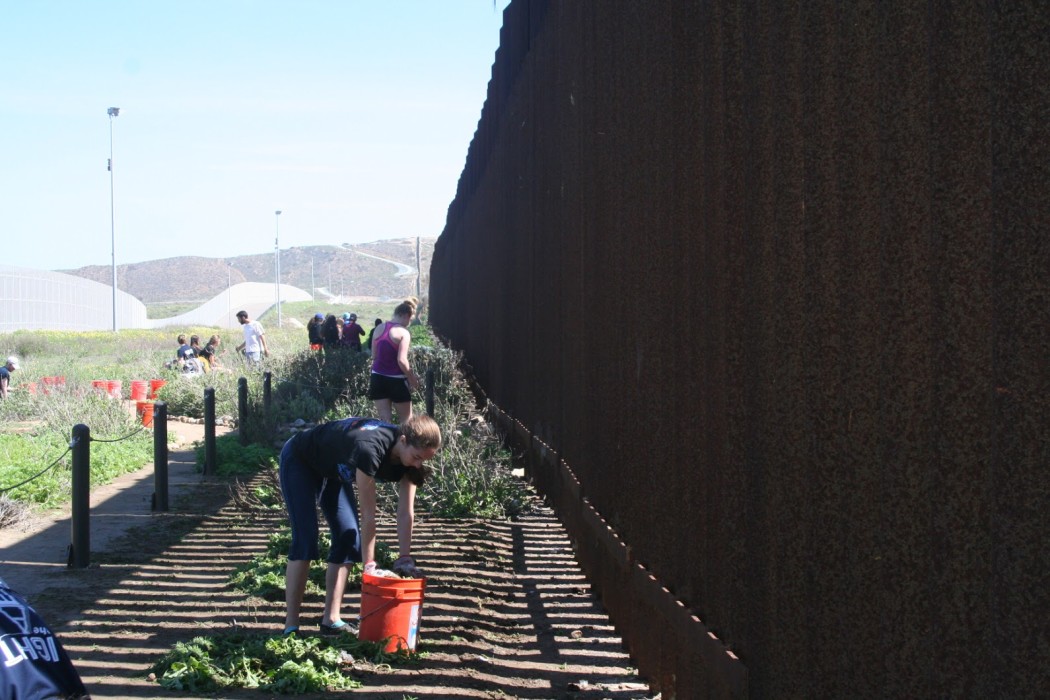What spring break taught me about borders, immigrants and U.S. policy
“It’s just ridiculous,” said senior Sophie Thelen as we looked out at the international border between the United States and Mexico. “It’s just all politics. It’s this division between people…that is completely imaginary. It’s amazing being next to it. You don’t get the feeling that, ‘Oh, that’s a place I can’t go.’ You just see the cars driving by on the freeway, you see the billboards and you’re just like, ‘Oh, normal life. Normal life here, normal life there. Let’s explore.’ But nope, you can’t do that.”
Standing so close to the fence, it was hard to disagree. After a 45-minute trek through grass and mud, I was expecting something a little more intimidating than a road and and some friendly vendors offering to sell us burritos. In some ways, however, the normalcy is the most unsettling part of the trip. It’s disturbing to know that this division is such a big deal. It’s disturbing that politics doesn’t seem to think about this humanity at all.
I was one of eight Utah State University students who traveled to San Diego with the service center’s Alternative Spring Breaks program. During our five days in California, we completed six service projects, all relating to refugees and immigrants.
I’ll admit I’m not the ideal candidate for a project to serve refugees. Before spring break, my knowledge of refugees was limited to an article about Syria that I read in a magazine. My Spanish proficiency amounts to approximately four words, and they’re all food items. I knew practically nothing about the trials and injustices that immigrants face.
Neither, it seems, do a portion of United States citizens and presidential candidates. At the start of his campaign trail last June, Republican candidate Donald Trump said, “When Mexico sends its people, they’re not sending their best … They’re sending people that have lots of problems, and they’re bringing those problems with us. They’re bringing drugs. They’re bringing crime. They’re rapists.”
Even if we ignore Trump’s inflammatory remarks, undocumented immigrants are often accused of being freeloaders, of stealing American jobs, of taking advantage of American resources without paying taxes or abiding by U.S. laws. Extreme rightists have advocated tightening border security and even gone so far as to suggest building a wall across the entire southern half of the United States.
In talking and working with immigrants in San Diego, I can only regard this as a nightmarish and potentially catastrophic idea. All of the immigrants with whom I spoke entered the U.S. with a desire to work and to create new opportunities for themselves and their families. They pay taxes, enjoy time with family, work honest jobs and express a sincere desire to accept all the responsibilities required of U.S. citizens.
My experience in San Diego led me to conclude that the best immigration policy would be one of acceptance and compassion rather than aggression and animosity. Economically and politically, immigrants enhance the United States. They are not a threat. In terms of politics and social environment, the bigger menace to the United States is a domestic fear of diversity. Refusing to acknowledge the rights and humanity of immigrants will hurt us far worse than accepting them into society.
I think San Diego artist Michael Schnorr put it best when he wrote, “Barriers, walls and fences must be broken down: between countries, between people, between neighborhoods.” The immigration “problem” can only be solved through love, through cooperation, through service and unity. The U.S. has enough borders as it is.
—h.mickeyd@gmail.com
@h_mickeyd

